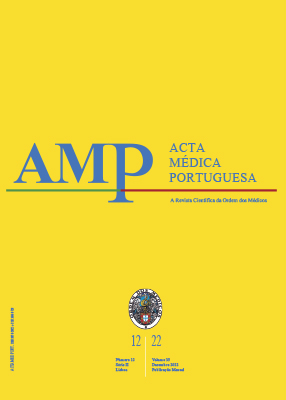Uso e Interpretação do Desenho Infantil na Prática Clínica
DOI:
https://doi.org/10.20344/amp.18388Palavras-chave:
Criança, Desenho, Desenvolvimento Infantil, Saúde MentalResumo
N/a.
Downloads
Referências
Woolford J, Patterson T, Macleod E, Hobbs L, Hayne H. Drawing helps children to talk about their presenting problems during a mental health assessment. Clin Child Psychol Psychiatry. 2015;20:68-83. DOI: https://doi.org/10.1177/1359104513496261
Kortesluoma RL, Punamäki RL, Nikkonen M. Hospitalized children drawing their pain: the contents and cognitive and emotional
characteristics of pain drawings. J Child Health Care. 2008;12:284-300. DOI: https://doi.org/10.1177/1367493508096204
Puglionesi A. Drawing as instrument, drawings as evidence: capturing mental processes with pencil and paper. Med Hist. 2016;60:359-87. DOI: https://doi.org/10.1017/mdh.2016.28
Kotroni P, Bonoti F, Mavropoulou S. Children with autism can express social emotions in their drawings. Int J Dev Disabil. 2018;65:248-56. DOI: https://doi.org/10.1080/20473869.2018.1434855
Lev-Wiesel R, Ramot O, Niv H, Daniel E, Gosh Y, Dahan A, et al. Physical versus sexual abuse as reflected in adolescents’ self-figure
drawings: a preliminary study. J Child Sex Abus. 2022;31:33-50. DOI: https://doi.org/10.1080/10538712.2020.1856993
Goldner L, Lev-Wiesel R, Binson B. Perceptions of child abuse as manifested in drawings and narratives by children and adolescents.
Front Psychol. 2021;11:562972.
Dunn J, O’Connor TG, Levy I. Out of the picture: a study of family drawings by children: from step-, single-parent, and non-step families. J Clin Child Adolesc Psychol. 2002;31:505-12. DOI: https://doi.org/10.1207/S15374424JCCP3104_9
Madigan S, Ladd M, Goldberg S. A picture is worth a thousand words: children’s representations of family as indicators of early attachment. Attach Hum Dev. 2003;5:19-37. DOI: https://doi.org/10.1080/1461673031000078652
Fialho O. Desenho infantil, espelho do mundo interno da criança. Lisboa; Edições Colibri; 2019.
Vlachos F, Bonoti F. Left- and right-handed children’s drawing performance: is there any difference? Laterality. 2004;9:397-409. DOI: https://doi.org/10.1080/13576500342000239
Matto HC. Investigating the validity of the Draw-A-Person: screening procedure for emotional disturbance: a measurement validation study with high-risk youth. Psychol Assess. 2002;14:221-5. DOI: https://doi.org/10.1037/1040-3590.14.2.221
Soll BM, Brandelli CA, Vaitses FA, Chinazzo ÍR, Silva DC, Schwarz K, et al. Use of the House-Tree-Person Projective Drawings and Parental Styles Inventory in the global psychological evaluation of transgender youth who seek healthcare at the Gender Identity Program. Front Psychol. 2019;12;10:2488. DOI: https://doi.org/10.3389/fpsyg.2019.02488
Downloads
Publicado
Como Citar
Edição
Secção
Licença
Direitos de Autor (c) 2022 Acta Médica Portuguesa

Este trabalho encontra-se publicado com a Creative Commons Atribuição-NãoComercial 4.0.
Todos os artigos publicados na AMP são de acesso aberto e cumprem os requisitos das agências de financiamento ou instituições académicas. Relativamente à utilização por terceiros a AMP rege-se pelos termos da licença Creative Commons ‘Atribuição – Uso Não-Comercial – (CC-BY-NC)’.
É da responsabilidade do autor obter permissão para reproduzir figuras, tabelas, etc., de outras publicações. Após a aceitação de um artigo, os autores serão convidados a preencher uma “Declaração de Responsabilidade Autoral e Partilha de Direitos de Autor “(http://www.actamedicaportuguesa.com/info/AMP-NormasPublicacao.pdf) e a “Declaração de Potenciais Conflitos de Interesse” (http://www.icmje.org/conflicts-of-interest) do ICMJE. Será enviado um e-mail ao autor correspondente, confirmando a receção do manuscrito.
Após a publicação, os autores ficam autorizados a disponibilizar os seus artigos em repositórios das suas instituições de origem, desde que mencionem sempre onde foram publicados e de acordo com a licença Creative Commons









